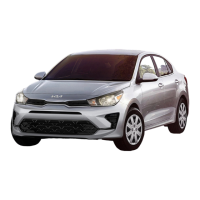Maintenance
1228
Appearance care
under high pressure and steam
are particularly effective in
removing accumulated mud and
corrosive materials.
䳜 When cleaning lower door panels,
rocker panels and frame mem
-
bers, be sure that drain holes are
kept open so that moisture can
escape and not be trapped inside
to accelerate corrosion.
Keep your garage dry
Don't park your vehicle in a damp,
poorly ventilated garage. This cre
-
ates a favorable environment for
corrosion. This is particularly true if
you wash your vehicle in the garage
or drive it into the garage when it is
still wet or covered with snow, ice or
mud. Even a heated garage can con
-
tribute to corrosion unless it is well
ventilated so moisture is dispersed.
Keep paint and trim in good condi
-
tion
Scratches or chips in the finish
should be covered with "touch-up"
paint as soon as possible to reduce
the possibility of corrosion. If bare
metal is showing through, the
attention of a qualified body and
paint shop is recommended.
Bird droppings : Bird droppings are
highly corrosive and may damage
painted surfaces in just a few hours.
Always remove bird droppings as
soon as possible.
Don't neglect the interior
Moisture can collect under the floor
mats and carpeting and cause cor
-
rosion. Check under the mats peri
-
odically to be sure the carpeting is
dry. Use particular care if you carry
fertilizers, cleaning materials or
chemicals in the vehicle.
These should be carried only in
proper containers and any spills or
leaks should be cleaned up, flushed
with clean water and thoroughly
dried.
Interior care
Interior general precautions
Prevent chemicals such as perfume,
cosmetic oil, sun cream, hand
cleaner, and air freshener from con
-
tacting the interior parts because
they may cause damage or discolor
-
ation. If they do contact the interior
parts, wipe them off immediately. If
necessary, use a mixture of warm
water and mild non-detergent
cleaner (test all cleaners on a con
-
cealed area before use). Use proper
car cleaner to clean interior parts.
Never allow water or other liquids to
come in contact with electrical/elec
-
tronic components inside the vehicle
as this may damage them.

